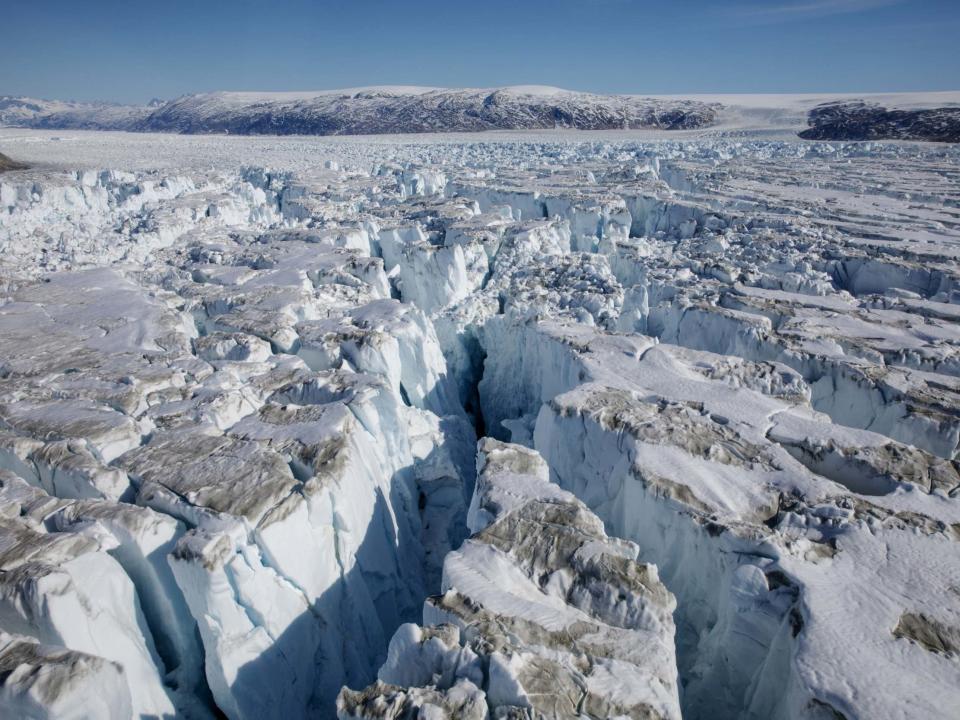Climate crisis: Ice sheets melting at ‘worst-case scenario’ rate

Ice sheets in Greenland and Antarctica are melting at a rate which matches climate scientists’ worst-case scenario forecasts and has raised the global sea level by 1.8cm in the past two decades.
Sea levels will rise by a further 17cm and put 16 million people at risk of yearly coastal flooding if global warming continues apace, British and Danish researchers warned.
Melting of ice in Greenland has pushed the world’s oceans up by 10.6mm since the sheets were first monitored by satellite in the 1990s, while Antarctic ice has contributed a further 7.2mm, according to a study by scientists at the University of Leeds and the Danish Meteorological Institute. The latest measurements show the world’s seas are now rising by 4mm each year.
“Although we anticipated the ice sheets would lose increasing amounts of ice in response to the warming of the oceans and atmosphere, the rate at which they are melting has accelerated faster than we could have imagined,” said the study’s lead author, Tom Slater, a climate researcher at the Centre for Polar Observation and Modelling at the University of Leeds.
“The melting is overtaking the climate models we use to guide us, and we are in danger of being unprepared for the risks posed by sea level rise,” he added.
The study, published in the journal Nature Climate Change, compares the latest results from satellite surveys of ice sheet mass with calculations from climate models. The authors warn the sheets are losing ice at the worst-case rate forecast by the Intergovernmental Panel on Climate Change (IPCC.)
Anna Hogg, study co-author and climate researcher at Leeds university’s School of Earth and Environment at Leeds, said: “If ice sheet losses continue to track our worst-case climate warming scenarios we should expect an additional 17cm of sea level rise from the ice sheets alone. That’s enough to double the frequency of storm-surge flooding in many of the world’s largest coastal cities.”
Global sea levels have historically mostly increased due to a mechanism called thermal expansion, which means that volume of seawater expands as it gets warmer. But in the last five years, water from the melting ice sheets and mountain glaciers has become the main cause of the rising oceans.
Greenland lost one million tonnes of ice for every minute of 2019, generating enough water to cover the US state of California in more than four feet of water, according to a study published last month.
But Ruth Mottram, climate researcher at the Danish Meteorological Institute, said: “It is not only Antarctica and Greenland that are causing the water to rise. In recent years, thousands of smaller glaciers have begun to melt or disappear altogether, as we saw with the glacier Ok in Iceland, which was declared ‘dead’ in 2014. This means that melting of ice has now taken over as the main contributor of sea level rise. “
A separate study published last week by US researchers warned global warming threatened to rapidly destroy Antarctic ice shelves with “huge implications for sea level”.
Rising temperatures could push meltwater into fractures in the shelves’ surface, making them vulnerable to collapse, warned scientists at Columbia University’s Lamont-Doherty Earth Observatory.
The worst-case scenario is “lots of places will be covered by lots and lots of water by the end of the century”, said glaciologist and study author Jonathan Kingslake.
Read more
Greenland lost 1 million tonnes of ice for each minute of 2019
The looming climate disaster that no one is talking about
Scientists warn of rapid melting of Antarctica’s ‘Doomsday glacier’

